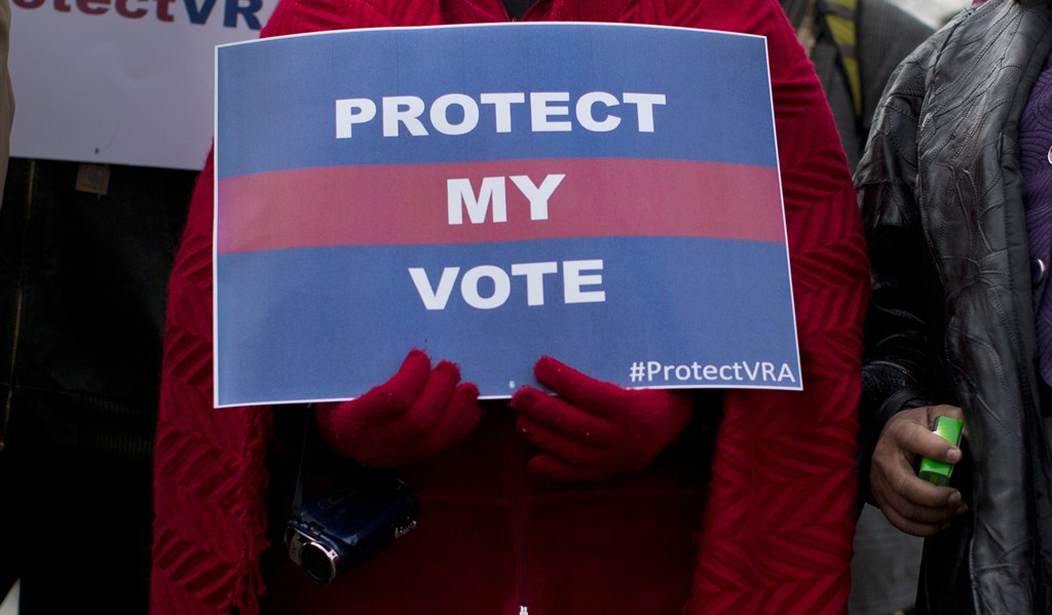In a 5-4 decision back in June 2023, the United States Supreme Court agreed with a lower court ruling issued by the United States District Court, Northern District of Alabama (Southern Division), affirming that Alabama congressional maps likely violated Section 2 of the Voting Rights Act. They found that:
(1) the Black voting age population was sufficiently numerous and geographically compact to constitute a majority in a second reasonably sized voting district; (2) Black Alabamians vote in a politically cohesive way; and (3) white voters vote sufficiently as a bloc to defeat Black voters’ preferred candidates.
The three-judge panel's original ruling specified,
Based on controlling precedent, we held that “the appropriate remedy is a congressional redistricting plan that includes either an additional majority-Black congressional district, or an additional district in which Black voters otherwise have an opportunity to elect a representative of their choice.” Milligan Doc. 107 at 5.
3 We observed that “[a]s the Legislature consider[ed remedial] plans, it should be mindful of the practical reality, based on the ample evidence of intensely racially polarized voting adduced during the preliminary injunction proceedings, that any remedial plan will need to include two districts in which Black voters either comprise a voting-age majority or something quite close to it.” Id. at 6.
The number of Black voters in Alabama is 26.7 percent of roughly a 3.7 million voting population. Blacks in Louisiana and Georgia comprise more than 30 percent of their state's registered voters. Alabama county maps show that a major concentration of registered Black voters is in what is known as the "Black Belt" around the Montgomery state capital. These counties include: Greene, Sumter, Hale, Marengo, Perry, Dallas, Wilcox, Lowndes, Montgomery, Macon, Bullock, and Barbour. The assertion within the ruling is that because a large segment of Black voters exist in the Black Belt, they are not being adequately represented with the current congressional makeup, and their voices are not fully represented. There appears to be no assessment of what percentage of Blacks exist in mixed or majority-white counties that also make up that 26.7 percent. Madison and Limestone Counties hold the city of Huntsville, the largest city in the state. Madison County counts 68 percent of voters in the county as white, while Limestone is almost 79 percent. What percentage of that remaining 32 percent (Madison) and 21 percent (Limestone) have Black voters? There is no indication whether this question has been asked or adequately answered in terms of judging whether disenfranchisement has occurred.
The ruling ordered the creation of a second district that also weighted toward a larger Black population. In an effort to comply with this ruling, the Alabama legislature's redistricting arm chose to leave six of the majority Black counties in Congressional District 7 and moved the other five into Congressional District 2, with 10 other majority white counties. The Republican majority Alabama legislature approved the map, and Governor Kay Ivey signed off on it.
It is this move that is seen as a violation of the original ruling. On Tuesday, the three-judge panel rejected the map.
In a 217-page order handed down Tuesday, a federal three-judge panel ruled the remedial congressional map drawn in a special session by the Alabama Legislature invalid, citing a previous mandate to create a second majority-Black district.
The judges assigned court-appointed officials, including a special master and cartographer, to create a map compliant with court guidance by Sept. 25. These districts will go into play during the 2024 election.
Current District 7 Representative Democrat Terri Sewell sees this as a victory.
NEWS: A federal court just struck down the Alabama state legislature's 2023 redistricting plan and directed a special master to fairly redraw our congressional maps.
— Rep. Terri A. Sewell (@RepTerriSewell) September 5, 2023
This is yet another victory for Black voters and the promise of fair representation!
Read my full statement. 👇🏾 pic.twitter.com/WJfzInpsj4
Sewell's statement read:
“Today’s decision is yet another victory for Black voters in Alabama and for the promise of fair representation. By appointing a special master to fairly redraw Alabama’s congressional map, the court has rejected the state legislature’s latest attempt to dilute the voices and voting power of African Americans all across our state.
“While we were outraged by the Alabama State Legislature’s open defiance of the Supreme Court’s original order to create two majority-minority districts, I am nonetheless grateful that a federal court has now intervened to protect the voices of Alabama’s Black voters.
“The Voting Rights Act of 1965 is indeed alive and enforceable!”
The legislature worked together to meet the court's vague requirements, so today's ruling is disappointing. Above all, it's frustrating that the court chooses to legislate when the Alabama Legislature knows our citizens, hometowns, and communities better than any federal judge. https://t.co/arIb5go8wN
— Nathaniel Ledbetter (@RepLedbetter) September 5, 2023
The Florida legislature is experiencing similar woes with the same activists claiming it disenfranchises the Voting Rights Act because Blacks (read: Democrats) are not allowed to put up their candidates and achieve a guaranteed win.
The end-game for Democrats and their activist arms like the Southern Poverty Law Center appears to be what they are accusing the Republican-majority legislature of doing: consolidating power in order to wrest control of the legislative outcomes. Consolidating five Black majority counties with counties of other races is less about diluting the Black vote and more about diversifying it, but cries of disenfranchisement and creating barriers to voting for Blacks remain the clarion call.
“The Supreme Court’s decision recognizes that the right of all Americans to equal representation still stands, but the fight does not end here,” said Bradley Heard, voting rights deputy legal director for the SPLC. “We will continue to challenge any barriers to voting wherever we see them, and we will advocate for the full restoration of all protections under the Voting Rights Act.”
Alabama Attorney General Steve Marshall plans to once again move this ruling up the chain to SCOTUS.
Alabama Attorney General Steve Marshall’s office said it will ask the U.S. Supreme Court to review the decision.
“While we are disappointed in today’s decision, we strongly believe that the Legislature’s map complies with the Voting Rights Act and the recent decision of the U.S. Supreme Court,” the office said in a statement.
Marshall is a known strategist, so there must be some merit to pushing for a second go-round with SCOTUS on Voting Rights Act grounds. As 2024 looms large, expect to see major movement on this ruling and other redistricting battles.















Join the conversation as a VIP Member